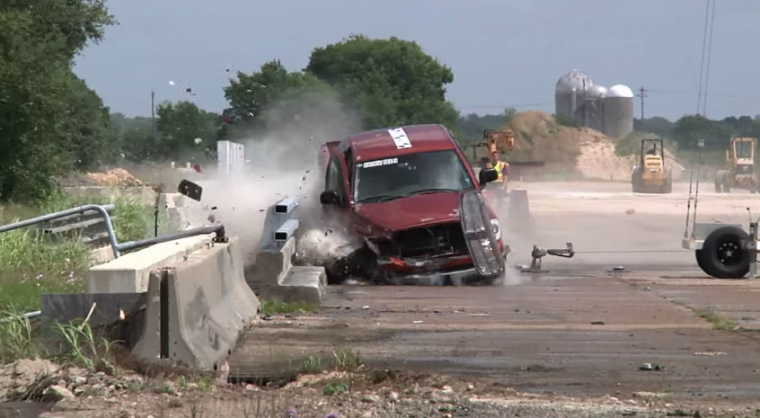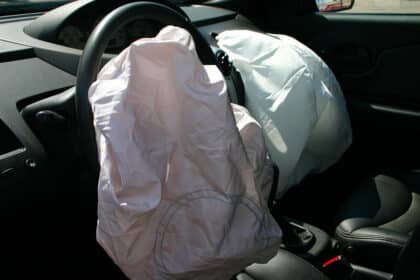Humans as a species love to tell stories. However, sometimes those stories turn out to be false, or outdated, or just plain made up, and the resulting myths could negatively affect people and their cars. So, in the interest of clearing away some of the stories surrounding cars out there, these are some car myths that we really, really would like to just go away.
[wptab name=’Accident-Free Safety Systems’]
The Accident-Free Safety Systems Myth
As more and more cars are equipped with active safety systems like Blind Spot Monitoring and automatic braking, it’s easy to think that perhaps the time is coming shortly when accidents are a thing of the past, when all of these automatic systems will keep bad drivers from crashing into people.
Unfortunately, the reality is that many of these systems are configured in such a way as to leave responsibility for keeping the vehicle in control on the driver—for example, automatic braking generally doesn’t work on the highway, as in order to brake in time the system would need to start a braking maneuver really early, and sensors for these systems are typically not terribly high-resolution, so could be confused by random objects in the road. If it did suddenly slam on the brakes for a plastic bag, the car behind you who didn’t expect you suddenly to stop would then hit you.

[wptab name=’Bigger Is Safer’]
The Bigger Is Safer Myth
When it comes to car selection, one of the common reasons for choosing a big crossover, SUV, or truck is that it is safer—this at first seems to make sense, for the simple fact that there is so much more vehicle between you and the outside world. However, bigger does not necessarily mean better—for example, the Insurance Institute for Highway Safety maintains a list of vehicles that are recommended for new drivers, and the largest part of that list is midsize cars like the Nissan Altima, Chevrolet Malibu, Mazda6, and Subaru Outback. On the other end, only two trucks made the list: the Toyota Tundra and Ford F-150 crew cab.
Of course, this isn’t to say that tiny cars are safer, either—the IIHS is quick to point out that there are absolutely zero microcars or even small cars that made the cut. So, to sum up, it seems that the best way to go is to find something that is in the middle, that has good safety ratings, and for new drivers, maybe something less likely to roll.

[wptab name=’Bullet Shield’]
The Bullet Shield Myth
This one is a myth perpetuated by movies, where the hero, facing a squad of bad guys with their guns at the ready, dives behind their car for shelter from the oncoming bullet storm. Unfortunately, despite how cool it looks on camera to shoot a ton of bullets into a car, for the most part that car would offer incredibly minimal protection.
This is a myth that falls apart when you think about it. With the exception of an engine block, a normal passenger car is mostly empty space for people and cargo to sit in, and save for a few bullets that would potentially hit side-crash bars and other structural pieces inside the door and deflect, many will pass right through.
Instead, it’s recommended that you get behind piles of dirt, steel plating, or concrete barriers.

[wptab name=’3000-Mile Oil Change’]
The 3,000-Mile Oil Change Myth
The idea that you should get your oil changed every 3,000 miles is an old one, stretching far back into the distant automotive past. However, today this time scale is very much so unnecessary, despite how often oil change shops and well-meaning uncles repeat the 3,000-mile figure.
Probably this has hung around for so long because it once was true — it used to be that engine oil didn’t last for very long and would start to break down and gum up your engine. Modern oils, though, are often made synthetically, and in modern engines can often last up to 10,000 miles before needing to be changed (your owner’s manual should include a correct oil change interval for your vehicle).
Another reason that this myth has probably kept going is that changing your oil more often won’t hurt your car. However, it will drain more from your wallet, and extra oil being discarded for no reason can put more of a strain on the environment.

[wptab name=’Premium Fill-Up’]
The Premium Gas Myth
A similarly long-lived automotive myth to the oil change one is that you should always fill your tank with high-octane premium gas, promising that this will do anything from increasing the engine power to increasing fuel economy. However, higher-octane gas just prevents high-performance, high-compression engines from knocking, which occurs when there is a second ignition in the cylinder after the spark plug sets off the first.
As the Federal Trade Commission put it, “In most cases, using a higher octane gasoline than your owner’s manual recommends offers absolutely no benefit.”
There are some exceptions to this general rule, though, like the Mazda CX-9, whose high-compression engine makes 23 more horsepower with premium gas, though efficiency is unaffected.

[wptab name=’Burning Electric Cars’]
Photo: Amy Glaze
The Burning Electric Car Myth
This final myth is one that we have talked about on The News Wheel before: the idea that electric vehicles are somehow more likely to catch on fire in the event of a crash. This one likely arose due to some highly-reported instances of Teslas and Volts catching fire, which in one particular case of a Tesla crash caused reignition of the blaze several hours later.
However, the National Highway Traffic Safety Administration has called electric cars on par with or possibly even slightly less flammable than regular gasoline or diesel vehicles. The problem, in the case, is really that fire departments aren’t trained as well in dealing with electric car fires, and methods used against gasoline fires like smothering foam just don’t work. The National Fire Protection Association instead recommends lots and lots of water to cool down the battery pack.

[end_wptabset]
News Sources: Jalopnik, Business Insider, Hot Cars, IIHS
The News Wheel is a digital auto magazine providing readers with a fresh perspective on the latest car news. We’re located in the heart of America (Dayton, Ohio) and our goal is to deliver an entertaining and informative perspective on what’s trending in the automotive world. See more articles from The News Wheel.

















